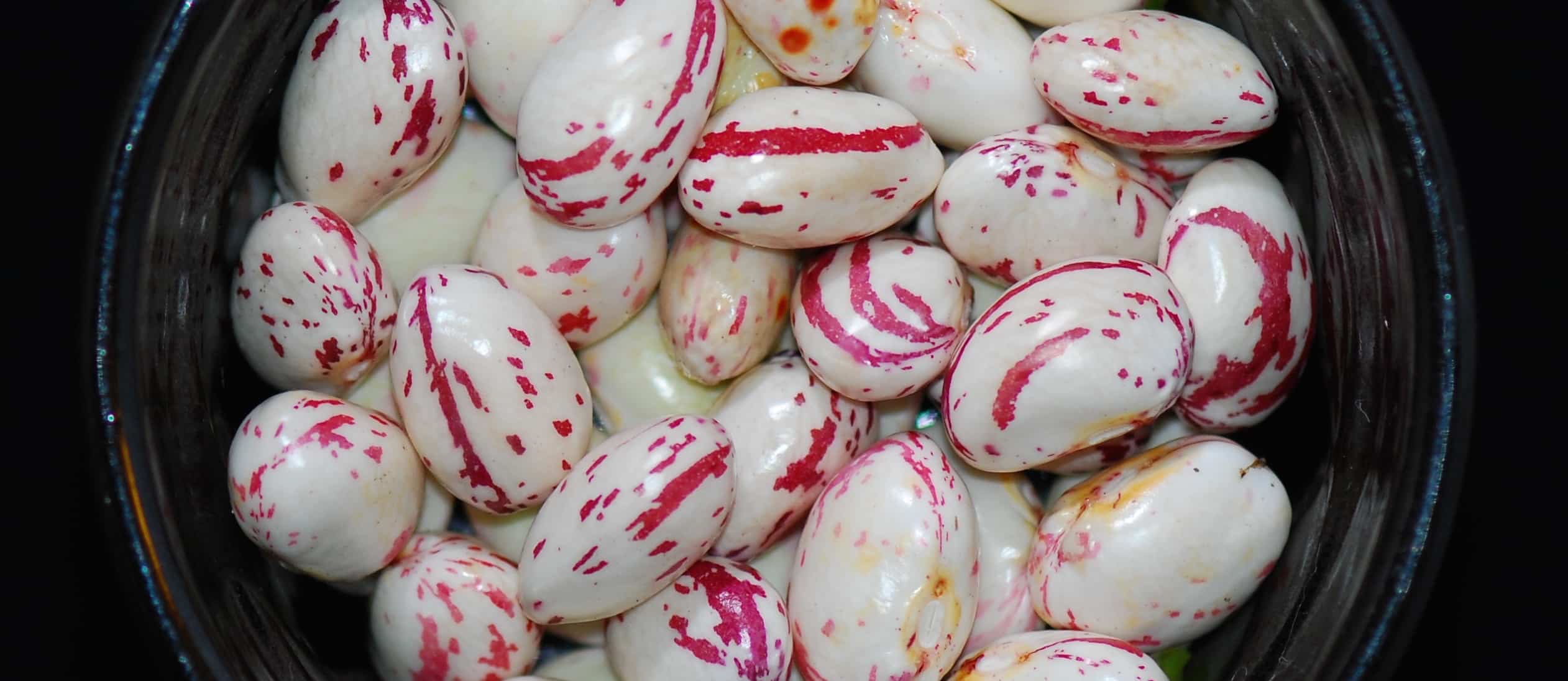In my videos, Phytates in the Prevention of Cancer and Phytates for Rehabilitating Cancer Cells, I described how phytates in beans may be the reason why legumes are so successful in preventing cancer and re-educating cancer cells. What about phytates for the treatment of cancer?
Colorectal cancer is the second leading cause of cancer death in the United States. It arises from “adenomatous polyps,” meaning that colon cancer starts out as a benign little bump called a polyp and then grows into cancer that can eventually spread to other organs and kill. So the National Cancer Institute funded the Polyp Prevention Trial, highlighted in my video, Phytates for the Treatment of Cancer, to determine the effects of a high-fiber, high fruit and vegetable, low-fat diet.
Researchers found no significant associations between polyp formation and overall change in fruit and vegetable consumption. However, those with the greatest increase in bean intake only had about a third of the odds of advanced polyps popping up. It could have been the fiber in the beans, but there’s lots of fiber in fruits and vegetables, too. So it may have been the phytate.
If the tumors develop from polyps, they still need to spread. Tumor growth, invasion, and metastasis are multistep processes that include cell proliferation, digestion through the surrounding tissue, and migration through barrier membranes to reach the bloodstream so the tumor can establish new proliferating colonies of cancer cells. A critical event in tumor cell invasion is the first step: the tunneling through the surrounding matrix. To do this, the cancer cells use a set of enzymes called matrix metalloproteinases. This is where phytates might come in. We’ve known that phytates inhibit cancer cell migration in vitro, and now perhaps we know why. Phytates help block the ability of cancer cells to produce the tumor invasion enzyme in the first place (at least for human colon and breast cancer cells).
So what happens if you give phytates to breast cancer patients? Although a few case studies where phytates were given in combination with chemotherapy clearly showed encouraging data, organized, controlled, randomized clinical studies were never done—until now. Fourteen women with invasive breast cancer were divided randomly into two groups. One group got extra phytates; the other got placebo. At the end of six months, the phytate group had a better quality of life, significantly more functionality, fewer symptoms from the chemo, and did not get the drop in immune cells and platelets chemo patients normally experience.
What are the potential side effects of phytates? Less heart disease, less diabetes, and fewer kidney stones.
Because cancer development is such an extended process—it can take decades to grow—we need cancer preventive agents that we can take long-term. Phytates, which naturally occur in beans, grains, nuts, and seeds, seem to fit the bill.
In the past, there were concerns that the intake of foods high in phytates might reduce the bioavailability of dietary minerals, but recent studies demonstrate that this co-called “anti-nutrient” effect can be manifested only when large quantities of phytates are consumed in combination with a nutrient poor diet. For example, there used to be a concern that phytate consumption might lead to calcium deficiency, which then led to weakened bones, but researchers discovered that the opposite was true, that phytates actually protect against osteoporosis (See Phytates for the Prevention of Osteoporosis). In essence, phytates have many characteristics of a vitamin, contrary to the established and, unfortunately, still existing dogma among nutritionists regarding its ‘anti-nutrient’ role.
As one paper in the International Journal of Food Science & Technology suggests:
“Given the numerous health benefits, phytates participation in important intracellular biochemical pathways, normal physiological presence in our cells, tissues, plasma, urine, etc., the levels of which fluctuate with intake, epidemiological correlates of phytate deficiency with disease and reversal of those conditions by adequate intake, and safety – all strongly suggest for phytates inclusion as an essential nutrient, perhaps a vitamin.”
The paper concludes that inclusion of phytates in our diet for prevention and therapy of various ailments, cancer in particular, is warranted.
More on preventing tumor invasion and metastasis in:
- Prostate Cancer Survival: The A/V Ratio
- Amla Versus Cancer Cell Invasion
- Lung Cancer Metastases and Broccoli
Other foods that can help stop the progression of precancerous lesions (like the adenomatous polyps) are profiled in Strawberries versus Esophageal Cancer and Black Raspberries versus Oral Cancer.
-Michael Greger, M.D.
PS: If you haven’t yet, you can subscribe to my videos for free by clicking here and watch my full 2012 – 2015 presentations Uprooting the Leading Causes of Death, More than an Apple a Day, From Table to Able, and Food as Medicine.
